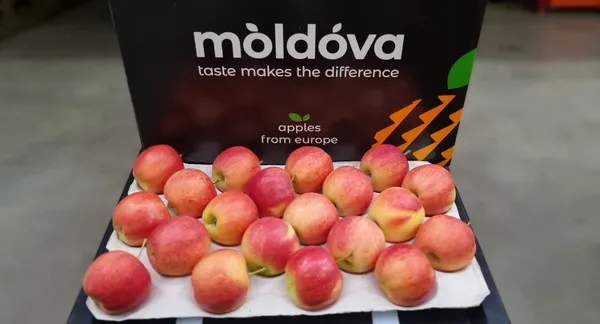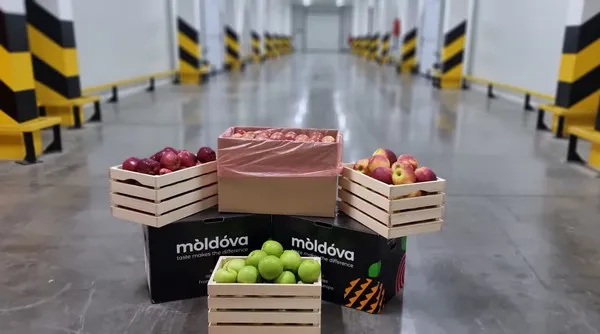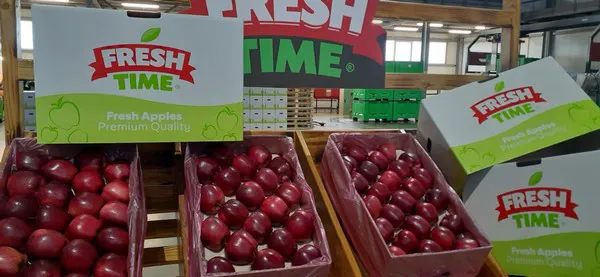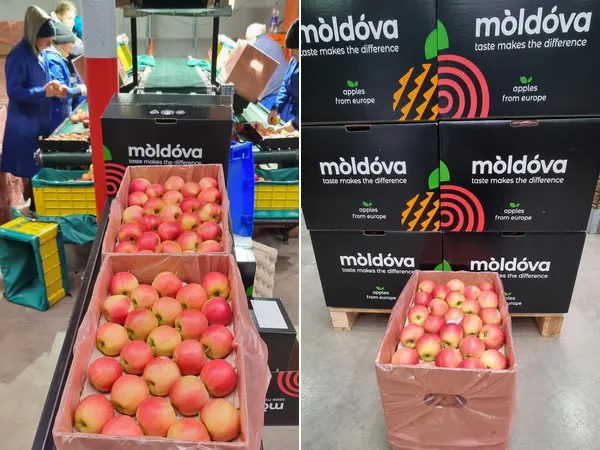“We exported fewer apples in November, mostly because this year’s harvest was small,” begins Iurie Fala of Moldova Fruct, the country’s fruit growers and exporters association. In September, we made a series of articles about the fruit sector in this small former Soviet state, that is nestled between Ukraine and Romania. Until the Russian embargo in August of this year, Moldova was marketing 95% of its huge apple production to Russia. Following that series, we contacted Moldova Fruct’s CEO again to catch up on how things are going in this penultimate week of 2022.

This interview centers around apples, even though Moldova is very strong - as our visit to the country late this summer showed - in plums, grapes, and cherries, too. What was not discussed - because when we contacted the CEO, the news was not yet known - is that the country’s security services consider a Russian invasion highly likely.
“It’s not a question of if Russia will launch an offensive against Moldova; it’s one of when,” the head of Moldova’s Security and Intelligence Service, Alexandru Mustiata, said in conversation with TVR Moldova last week. According to Mustiata, Russia still wants to capture a land corridor to Transnistria, the strip of land between Ukraine and Moldova. It has been held by Russian soldiers and Russian-backed militias since 1992.

That is disturbing news which will hopefully not materialize. Meanwhile, people in Moldova - and even in the parts of Ukraine where there is no fighting - have to keep earning a living every day. That includes fruit growers. “Yes, the war’s still raging,” says Iurie, “and that weighs on people’s minds, even in Moldova. We sometimes have problems with the electricity supply, which makes fruit storage especially harder. Plus, our biggest export market, Russia, has practically disappeared since August. But, generally, we’re trying to be resilient, and trade’s going quite well.”
Little rain
Then there is, of course, the smaller harvest. “That’s entirely due to the drought,” Iurie explains. “Last year, we picked 665,000 tons of apples in Moldova; this year, we suddenly have 40% less - 405,000 tons. Most orchards aren’t irrigated, so their yields largely depend on how much it rains. There are even 50% fewer plums.”

The war, too, is affecting exports. Not only are logistics to Russia far trickier since the war began, but there was also the August embargo. It was imposed only for Moldovan fresh fruit produced on the right branch of Dnestr river and is the third embargo since 2006. In 2021, Moldova growers sold as much as 95% of their apples on the Russian market. With the latest crop, that quantity is tethering on zero. Thus, a solution needed to be found overnight for all those tons of export apples about to be picked.
Export markets seemingly doubled
“We didn’t give up, though. In 2021, most of our apples went to Russia, with a small part going to 17 other countries. In 2022, we were active in 30 markets. That’s excellent progress. We exported a higher volume in 2020/21 than in the last marketing year (260,000 tons versus 190,000 tons), but in 2022, January-July exports were higher than in 2021. Given how complex the geopolitical situation has been since late February, we can certainly call that a success. With this year’s lesser harvest, we’ll have 100,000 tons in storage on December 1. That’s 50,000 tons less than on the same date last year. Even if we have to look for new markets, we’ll definitely sell those 100,000 tons,” Iurie states.

According to him, in 2022, Moldova still sold 74% of its apples to CIS countries. Even in the past, former Soviet republics such as Kazakhstan, Uzbekistan, and Belarus were some of the 18 countries where Moldovan apple exporters operated. This year, however, Moldova scaled up its imports, sending even more to the EU, and the remaining 26% to the Middle East. “I see great potential there,” says Iurie.
However, unlike in the European market, Moldovan exporters cannot benefit from their country’s more favorable exchange rate. “Transactions are done in dollars. Our leu’s value has hardly changed against that currency in recent months, while it’s lost some five percent against the euro. European customers can, thus, buy their apples for us a little cheaper than a few months ago.”

Less income
Moldova’s export figures are no higher than a year ago, says Iurie. And with the reduced yields and inflation reaching 35% there, at a point, growers’ and traders’ real-term incomes have fallen sharply. “Then there are the costs too. Energy prices have doubled,” says Iurie. “So growers want to sell their fruit as soon as possible to avoid refrigerating it for too long.”
The eighth edition of the Fruit Business Conference was recently held in Moldova. After two online versions, the organization welcomed more than 180 growers and exporters at this live event. “There was much to discuss because the war has, obviously, completely upended our sales market. And next year, in February, we’ll be at Fruit Logistica again. We cordially invite all interested parties to visit u at pavilion 7.1,” Iurie concludes.
For more information:
Iurie Fala (CEO)
Molodova Fruct
MD 2012 Chisinau (Moldova)
Tel: +373 222 23 005
Mob: +373 693 66 424
www.moldovafruct.md
